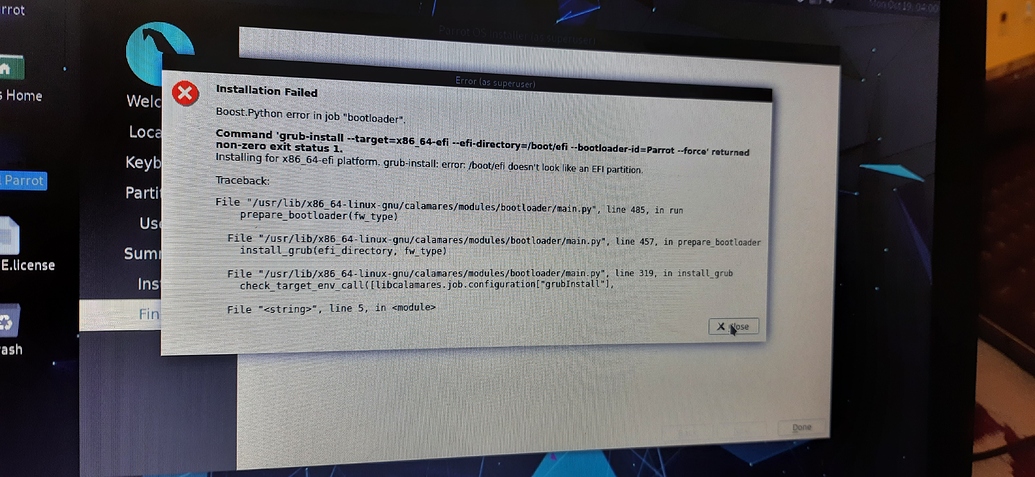

DON'T start download and do number 1 as it requires a restart). Download ISO from Parrot Project web page (start this first and do number 2 while it downloads.Setup Virtual switch inside Hyper-V control Center, giving access to sharing the host machine Netcard.
Parrot os installation install#
Make sure to install Hyper-V by adding it as a windows feature.However why do that when using Hyper-V turned out to be the most uncomplicated process I have yet to experience regarding virtual machines running Linux? Setting up and installing

I did find a short guide which suggested to create the VM under VirtualBox and migrate that to Hyper-V afterwards. The rest of this is how I got it up and running despite that I could not find any good guides out there.
Parrot os installation 64 Bit#
For practicallities, for the best 64 bit experience and stability concerns I choose Hyper-V. I had a couple of options at hand: VirtualBox, QEMU or Hyper-V. Both me and my wife uses this machine and she is studying and preparing for an exam, so it is not a descision without concerns. It is full disk encrypted with veracrypt and my D partition seperately encrypted and the machine has no TPM or build-in parallel support for encryption in the CPU so it is a bit slow-ish, but I still decided to try and run the Parrot OS as a virtual machine. Now my primary labtop is also an elderly rig, but it does have more modern architecture: So now what? I have a couple of spare machines lying around, but besides an old MAC (also 32 bit) and a chromebook, then all of these are low performance, small form factors, ranging from ARM devices to intel mobile device CPU architecture - and all of them would require a fixed setup with external monitor, keyboard and mouse. "Errors reading sector xyz" it said a couple of times. No success in installing - or even spinning up the live image - of this OS. I have an old 32 bit HP labtop, so it was almost too perfect that this distribution is still maintained in a 32 bit version. So I was searching for alternatives which brought me to the Parrot Project - specifically to the Parrot Security distribution.

However as a pen tool - hence also a security tool - I have a the fact that Kali is a single user system and that single user is root. Sure Kali is the #1 preffered and most widely used distribution for pentesting. As part of my self-study of ethical hacking I was looking for alternatives to Kali Linux.


 0 kommentar(er)
0 kommentar(er)
